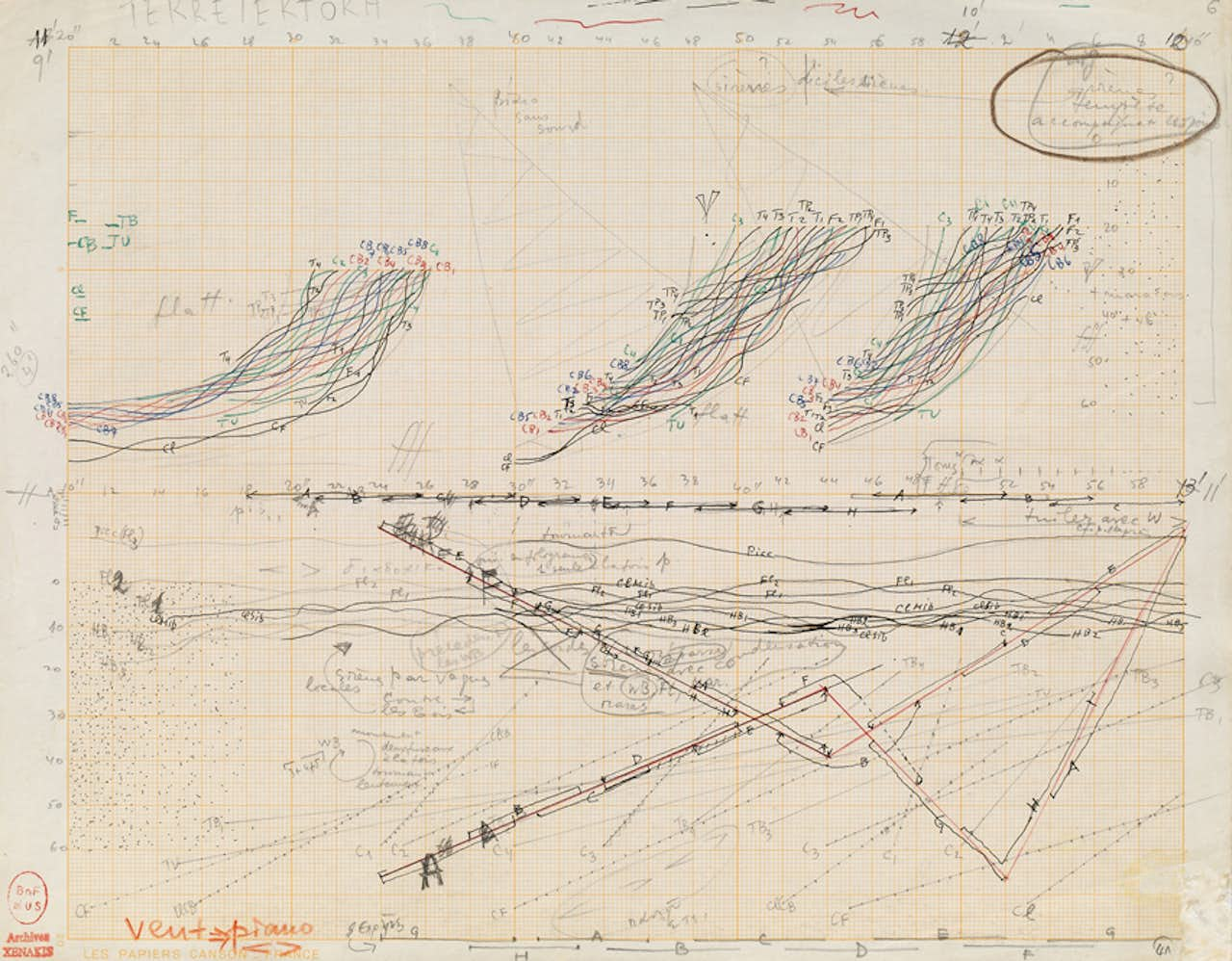Fortunatamente sono sfuggito al festival nazional-popolare, ma ho passato la serata di sabato prima dormicchiando e poi riflettendo sulla vicenda di Giacinto Scelsi e del suo principale trascrittore, Vieri Tosatti. Riflessioni stimolate da una bella conferenza di Franco Sciannameo a cui ho assistito, nel pomeriggio, al Conservatorio di Trento, dove insegno.
La vicenda è ben nota agli addetti ai lavori (o almeno dovrebbe esserlo), ma vale la pena di riassumerla. In breve, Giacinto Scelsi (1905 – 1988), ormai riconosciuto come uno dei più importanti compositori contemporanei e anticipatore sia della minimal music che dello spettralismo (con i famosi Quattro pezzi per orchestra su una nota sola del 1959), in realtà non ha mai scritto materialmente una nota. Il suo lavoro, invece, consisteva nel registrare su nastro l’essenza delle proprie idee musicali eseguendole (spesso improvvisando) sull’ondiola (nome originale ondioline), una tastiera elettronica inventata dal francese Jenny, in grado di produrre anche quarti e ottavi di tono.
I nastri venivano poi passati a dei trascrittori che, in concerto con il compositore, trascrivevano il materiale su pentagramma, curando anche l’orchestrazione. Il principale fra costoro fu Vieri Tosatti (1920 – 1999) che, in verità, dopo la morte di Scelsi, creò anche una polemica con la dichiarazione “Scelsi c’est moi”, ma il cui contributo passò rapidamente in secondo piano.
E invece, secondo gli studi e i ricordi di Sciannameo, che fu violinista nel quartetto che curò la prima esecuzione dei brani orchestrati da Tosatti per questo organico, dovrebbe essere rivalutato perché il suo sodalizio trentennale con Scelsi lo pone in una posizione che va sicuramente al di là di quella del semplice trascrittore, al punto che molti critici che osannano la genialità sonora di Scelsi, dovrebbero invece ricordare che il “rendering audio” dei lavori di Scelsi è in gran parte opera di Tosatti, essendo quest’ultimo “l’arrangiatore” che ha materialmente orchestrato il materiale di base.
In realtà, anche secondo me, è giusto affermare che i nastri originali andrebbero stampati e diffusi (mi dicono sia in corso un lavoro di catalogazione e “pulitura” del suddetto materiale da parte della Fondazione Scelsi) perché sono proprio questi ad essere storicamente testimoni dell’idea originale di Scelsi, mentre la musica stampata dovrebbe essere considerata come una “trascrizione approvata dal compositore”.
Ma mi chiedo anche se sia proprio così. Il problema è: in che misura i nastri sono depositari dell’idea compositiva? Rappresentano la composizione in quanto unica testimonianza originale, oppure sono soltanto un ulteriore elemento di passaggio verso la formalizzazione di una idea musicale?
Sciannameo ha portato alla luce una corrispondenza risalente agli anni ’30 fra Scelsi e Walter Kline (descritto spesso come allievo di Schoenberg, ma, secondo Sciannameo, amico di Schoenberg, forse allievo di Berg) che testimonia come l’impostazione compositiva di Scelsi sia stata da sempre un po’ particolare, basata com’era sulla produzione di una idea musicale, lasciando a dei collaboratori il compito di orchestrare e a volte anche di sviluppare il concetto originario.
Questo metodo di lavoro, forse derivante anche dalla condizione aristocratica di Giacinto Scelsi, a mio avviso non ne sminuisce la genialità, ma induce a riflettere sulla genesi e sulla effettiva paternità dell’opera d’arte che, nella tradizione occidentale, è considerata un prodotto del tutto individuale, mentre spesso (e attualmente sempre di più) si rivela essere il prodotto dell’interazione di più di una mente.
Personalmente, devo aggiungere che, alla fine, quello che mi dispiace un po’ in questa vicenda è proprio il fatto che, a causa di un pregiudizio legato alla tradizione individualistica della composizione, il sodalizio Scelsi – Tosatti sia stato tenuto nascosto per molto tempo e sia ancora fonte di studi e polemiche, mentre, secondo me, sarebbe stato vissuto molto meglio dai protagonisti (soprattutto da Tosatti) se fosse stato trasparente e socialmente accettato come una collaborazione perfettamente normale fra due persone, ognuno con il proprio ruolo.


